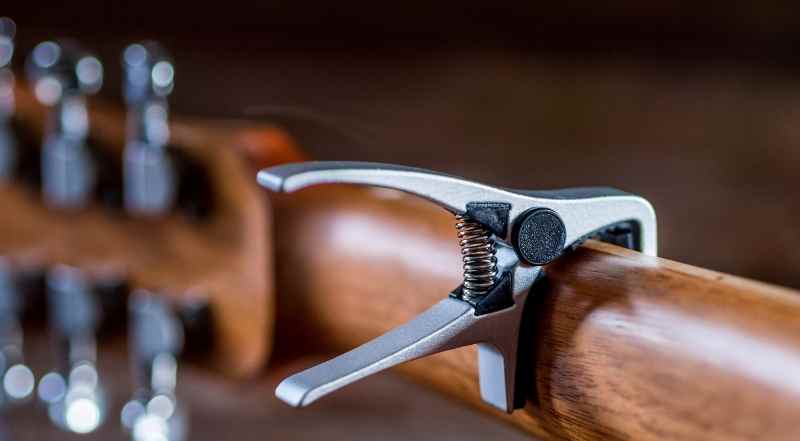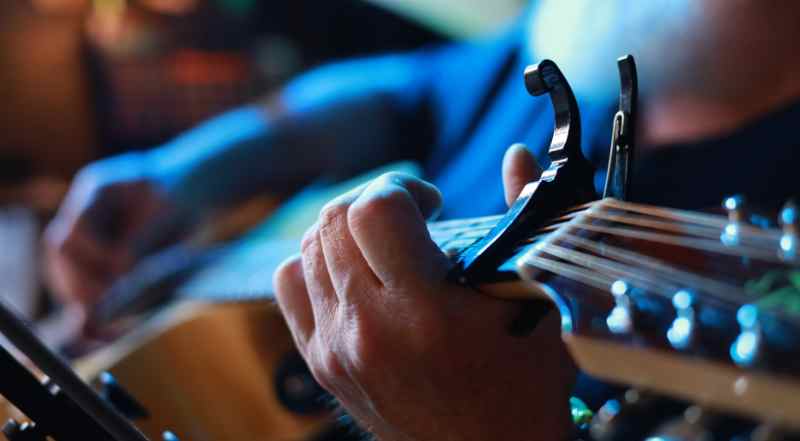If you’ve ever wondered how to use a guitar capo to change the pitch of your favourite songs or make playing certain chords easier, you’re in the right place. I’m here to guide you through the ins and outs of using a capo effectively.
What is a Guitar Capo?
First things first, let’s talk about what a guitar capo actually is. Essentially, a guitar capo is a small device that clamps down across the neck of your guitar, holding down all the strings at a particular fret. This changes the pitch of the open strings, allowing you to play in higher keys without learning new chord shapes. It’s like a magical tool that opens up a world of musical possibilities.

How to Attach a Capo
Using a guitar capo is a breeze once you get the hang of it. Here’s a simple step-by-step guide to attaching one:
Choose the Fret
Decide which fret you want to place the capo on. This determines the new key you’ll be playing in.
Open the Capo
Gently open the capo and position it just behind the chosen fret. Make sure it’s sitting evenly across all the strings.
Close the Capo
Press down on the capo’s handle to clamp it down onto the strings. Be sure not to press too hard, just enough to hold down the strings without buzzing.
Check the Sound
Strum your guitar to ensure all the strings sound crisp and clear. If any strings are buzzing, adjust the capo’s position slightly.
Practical Uses of a Capo
Now that you’ve attached the capo correctly, let’s explore why and when you might want to use one:
Change the Key
If a song is too low or high for your voice, a capo allows you to shift the key to a more comfortable range without changing your chord shapes.
Play Challenging Chords
Some chord shapes can be tricky, especially for beginners. Using a capo can simplify those complex chords by transposing them into more manageable positions.
Create Unique Sounds
Capos can add a fresh sound to your playing by altering the guitar’s open-string tunings. This is particularly popular in folk and acoustic music.
Adjusting Your Playing
Using a capo will inevitably change how you approach your guitar playing:
Chord Shapes
With a capo, your familiar chord shapes will produce different chords. Embrace this as an opportunity to explore new sounds.
Melodies and Solos
Capos can make playing melodies and solos in higher registers easier, lending a different flavour to your music.
Transposition
If you’re playing with other musicians, using a capo can help you quickly transpose songs to match their preferred key.
Conclusion
I hope now you know what a guitar capo is and how to use a guitar capo. Now you know how it opens up a world of musical possibilities, from changing keys to simplifying complex chords. So, go ahead, experiment, and use your capo to enhance your guitar playing and create beautiful music.
FAQs
Answer: No, it’s not necessary, but it’s a valuable tool that can expand your musical horizons.
Answer: Absolutely, capos work on both acoustic and electric guitars.
Answer: When used correctly, capos should not significantly affect sound quality. Ensure it’s properly positioned to avoid buzzing or muffled tones.
Answer: Yes, using a capo can help simplify barre chords by transposing them to higher positions on the neck.
Answer: Yes, there are various types of capos, including spring-loaded, clamp-style, and partial capos. The choice depends on your preference and the sound you want to achieve.

